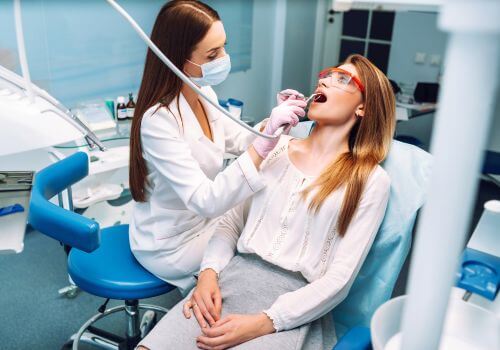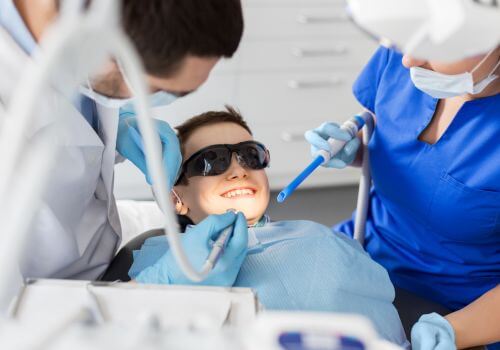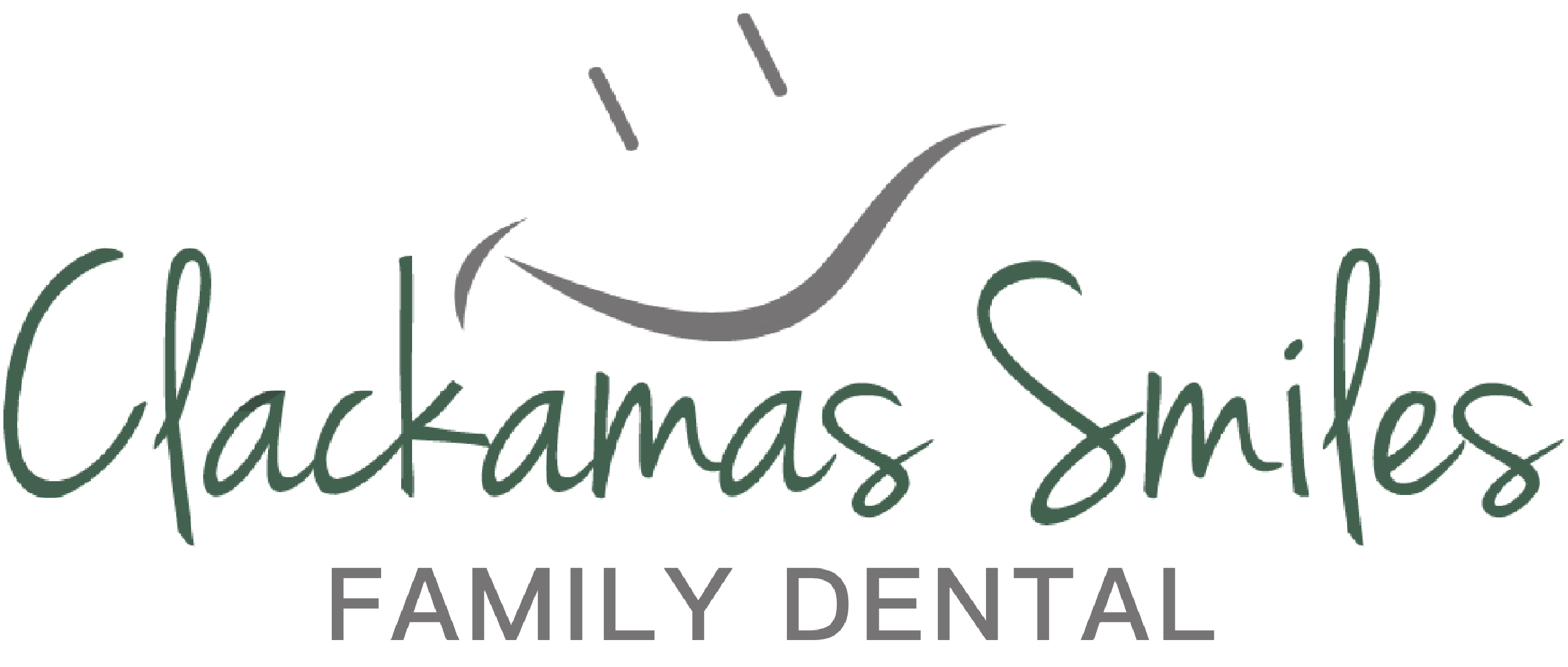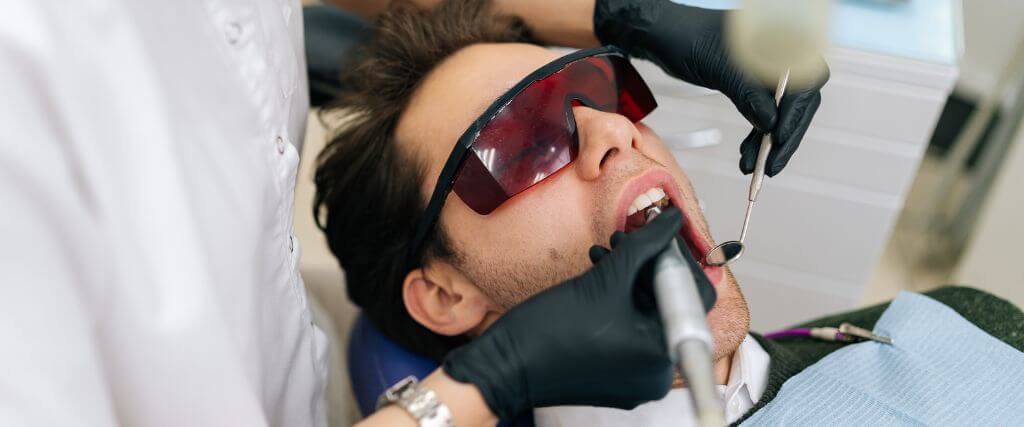Laser dentistry is a dental care approach that uses focused light beams rather than traditional tools to perform precise treatments. Since the early 1990s, these specialized treatments have revolutionized how dentists address concerns in the mouth. Laser systems allow for more accurate work, often with less patient discomfort.
As dental professionals, we’re here to help you understand laser dentistry and determine whether it’s right for you. Keep reading to learn more!
How Laser Dentistry Works
Dental lasers operate on a simple principle: they emit concentrated light energy that triggers reactions when it contacts different tissue types. When directed at tooth enamel, bone, or gum tissue, the laser causes specific changes depending on its wavelength and power settings.
The dentist controls the laser with remarkable accuracy, targeting only the areas that need treatment while leaving healthy tissue untouched. This precision makes dental lasers valuable for complex procedures that require detailed work.

Common Uses for Dental Lasers
Dental lasers serve many purposes in modern dentistry.
Some of the most common uses for dental lasers include:
- Cavity detection: Finding early signs of tooth decay before they’re visible to the naked eye
- Cavity treatment: Removing decay and preparing teeth for fillings without traditional drilling
- Gum reshaping: Improving gumline appearance for cosmetic purposes
- Excess tissue removal: Addressing overgrown gum tissue
- Periodontal (gum) disease treatment: Removing infected tissue and reducing bacteria in gum pockets
- Frenectomy procedures: Releasing tongue or lip ties
- Cold sore and canker sore treatment: Reducing pain and healing time
- Teeth whitening enhancement: Activating whitening solutions for faster, more effective results
- TMJ pain relief: Decreasing inflammation and discomfort in the jaw
- Bacterial reduction: Fighting oral infections without antibiotics
- Biopsy procedures: Removing small tissue samples for testing
- Crown lengthening: Exposing more tooth structure for restorative procedures
Laser Dentistry Benefits
Laser dentistry has several advantages over conventional methods. Patients experience less pain during and after procedures, which often means a reduced need for anesthesia and pain medication. The precision of lasers minimizes damage to surrounding tissues, resulting in less swelling, bleeding, and discomfort during recovery.
The healing process after laser procedures is typically faster than with traditional methods. Lasers sterilize as they work, reducing the risk of infections. This sterilizing effect makes treatments more effective while decreasing complications afterward.
Many patients appreciate that laser procedures often take less time than conventional dental work. Lasers’ efficiency translates to shorter appointments and fewer follow-up visits, making it easier to fit dental care into busy schedules.
For those with dental anxiety, laser dentistry provides a more comfortable experience. Many patients report feeling more at ease during treatment without the noise, vibration, and pressure typically associated with dental drills. This enhanced comfort can encourage people to maintain regular dental care instead of avoiding necessary procedures.

What to Expect
Before a laser procedure, your dentist will discuss the process and answer any questions you may have. You’ll wear special protective eyewear to shield your eyes from the laser during treatment. The dentist and dental team will also wear protective glasses.
Unlike traditional drills, lasers produce minimal noise and vibration. However, you might notice a faint popping sound during the procedure as the laser does its work. You may also detect a slight smell from the interaction between the laser and your tissue — this is normal and not a cause for concern.
Most patients experience little to no discomfort during laser treatments. Depending on the procedure, your dentist may use local anesthesia, though often in smaller amounts than would be needed for traditional methods.
The length of your appointment depends on the specific treatment, but many laser procedures take less time than their conventional counterparts. Your dentist will let you know what to expect for your situation.
Recovery After Laser Dental Treatment
After a laser procedure, follow your dentist’s care instructions. These might include temporarily avoiding certain foods or beverages, using prescribed or over-the-counter pain relievers, or applying cold compresses to reduce swelling.
There is usually no downtime, so most people resume normal daily activities immediately following laser treatments. More complex procedures might require a brief recovery period, which is usually shorter than conventional treatments.
Contact your dentist right away if you experience unexpected pain, bleeding, or other concerns during recovery. While complications are rare, addressing any issues early ensures the best possible outcome.
Cost and Insurance Considerations
The cost of laser dental procedures varies depending on the specific treatment, your location, and the dentist’s experience with laser technology. Generally, laser treatments cost somewhat more than traditional methods due to the advanced equipment involved.
Many dental insurance plans now cover laser procedures, especially when they’re used for necessary treatments rather than cosmetic improvements. Before scheduling, check with your insurance provider to understand your coverage for laser treatments.
Some patients find that laser dentistry can be cost-effective long-term despite potentially higher upfront costs. Faster healing times often mean fewer follow-up appointments, less time off work, and reduced need for pain medications.
When discussing treatment options with your dentist, ask for a detailed breakdown of costs and insurance coverage. Some dental practices also offer payment plans to help make laser treatments more accessible.
Choosing the Right Dentist
Look for dentists who have specific training in laser dentistry. Ask about their experience, including how long they’ve been using lasers and how many similar procedures they’ve performed.
During a consultation, discuss the benefits and risks of laser treatment for your specific situation. A good dentist will explain why they recommend laser technology for your needs and address any concerns you might have.
Don’t hesitate to ask for before-and-after photos of similar cases or patient testimonials. These can provide insight into the dentist’s skill and the potential results of your treatment.
Remember that comfort with your dental provider matters. Look for someone who takes your concerns seriously, answers your questions, and makes you feel at ease about the procedure.
The Future of Laser Dentistry
Laser technology continues to advance in the dental field as researchers develop new applications and refine existing techniques to make treatments even more effective and comfortable for patients. As equipment becomes more affordable and compact, more dental practices are incorporating lasers into their practices, making laser dentistry increasingly accessible to patients.
With ongoing innovation, patients can expect even more dental procedures to benefit from laser technology in the coming years. These advances promise to make dental care more precise, comfortable, and effective for people of all ages.
Laser dentistry offers a more comfortable, precise, and efficient option for many dental procedures. The reduced pain, faster healing, and decreased anxiety make it an appealing choice for people who want modern solutions for their oral health needs. Ask your dentist about laser options during your next appointment to learn if these advanced treatments could benefit your oral health.

